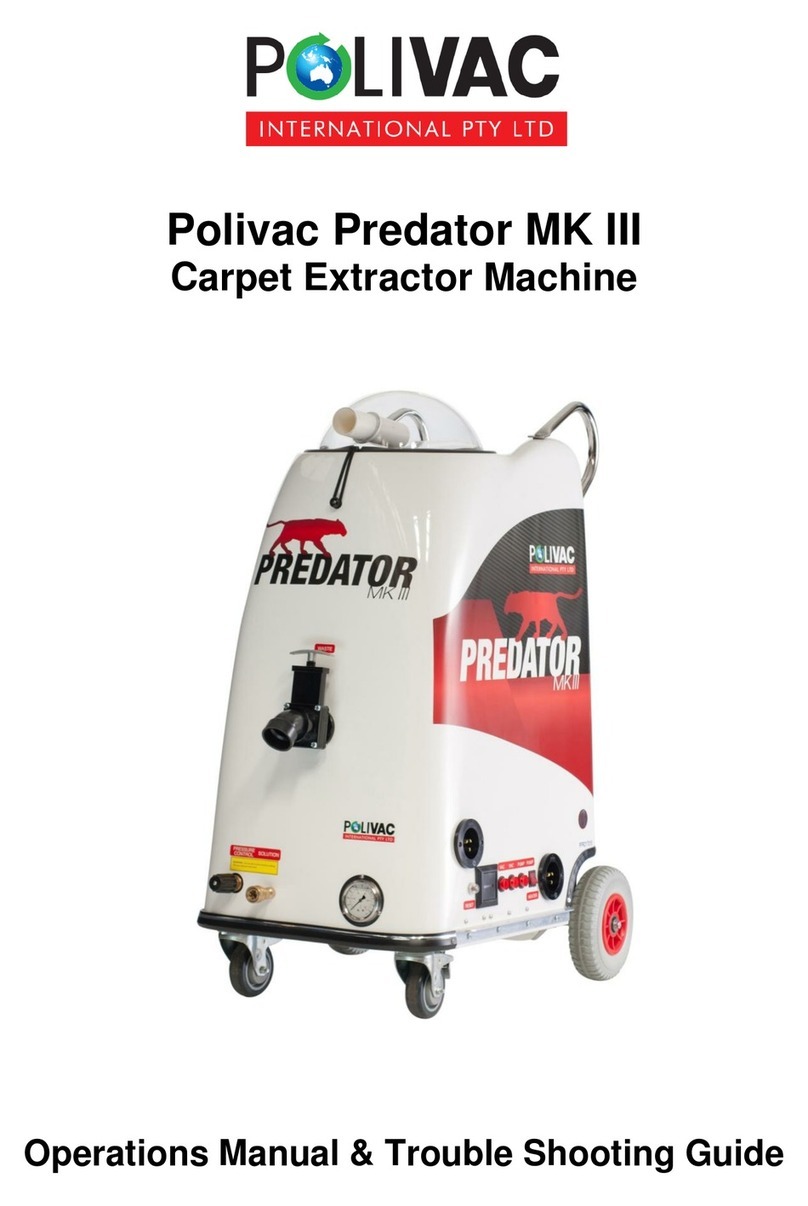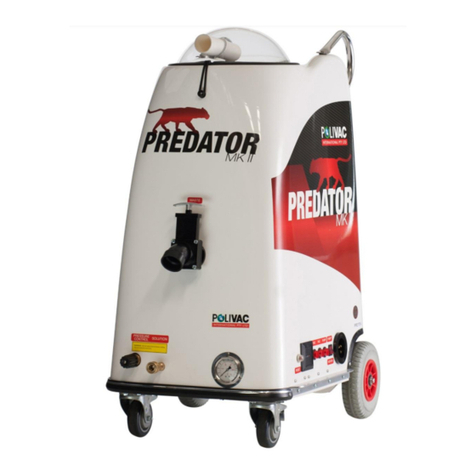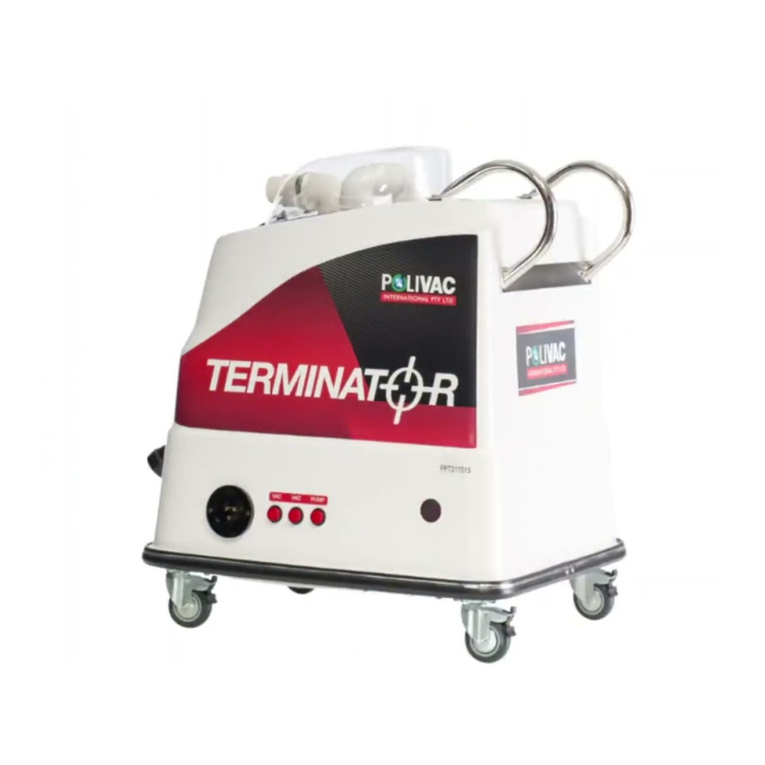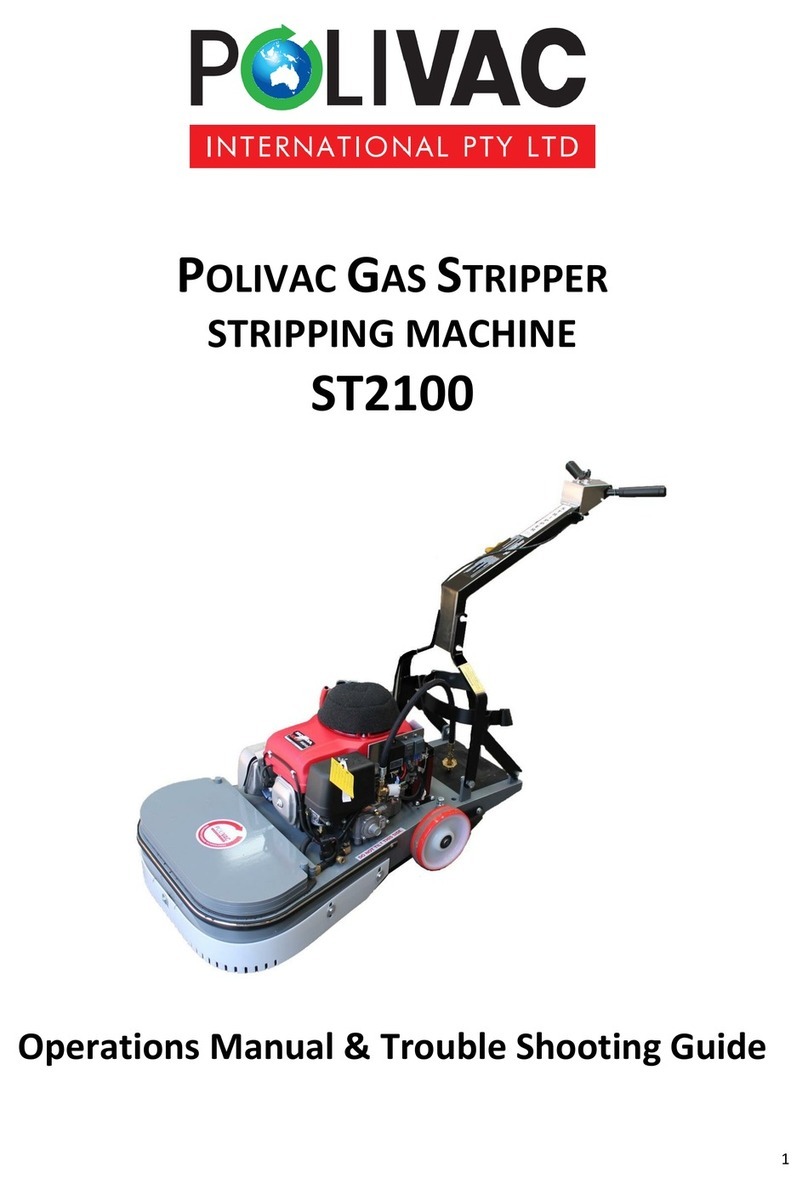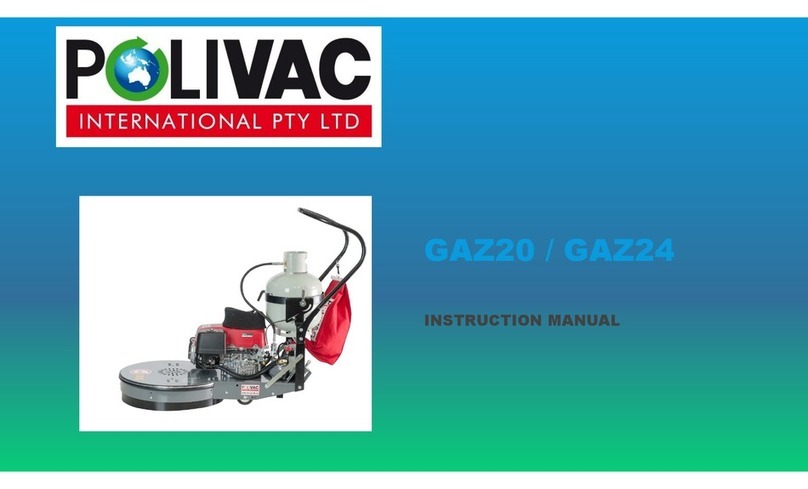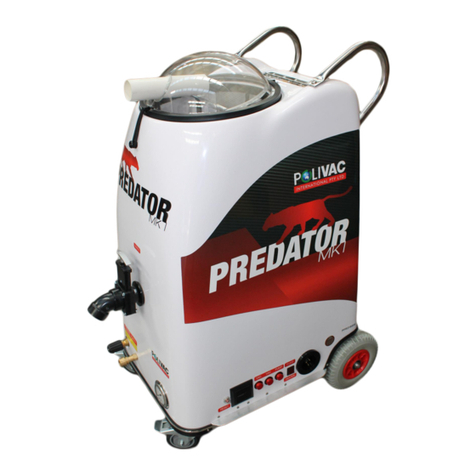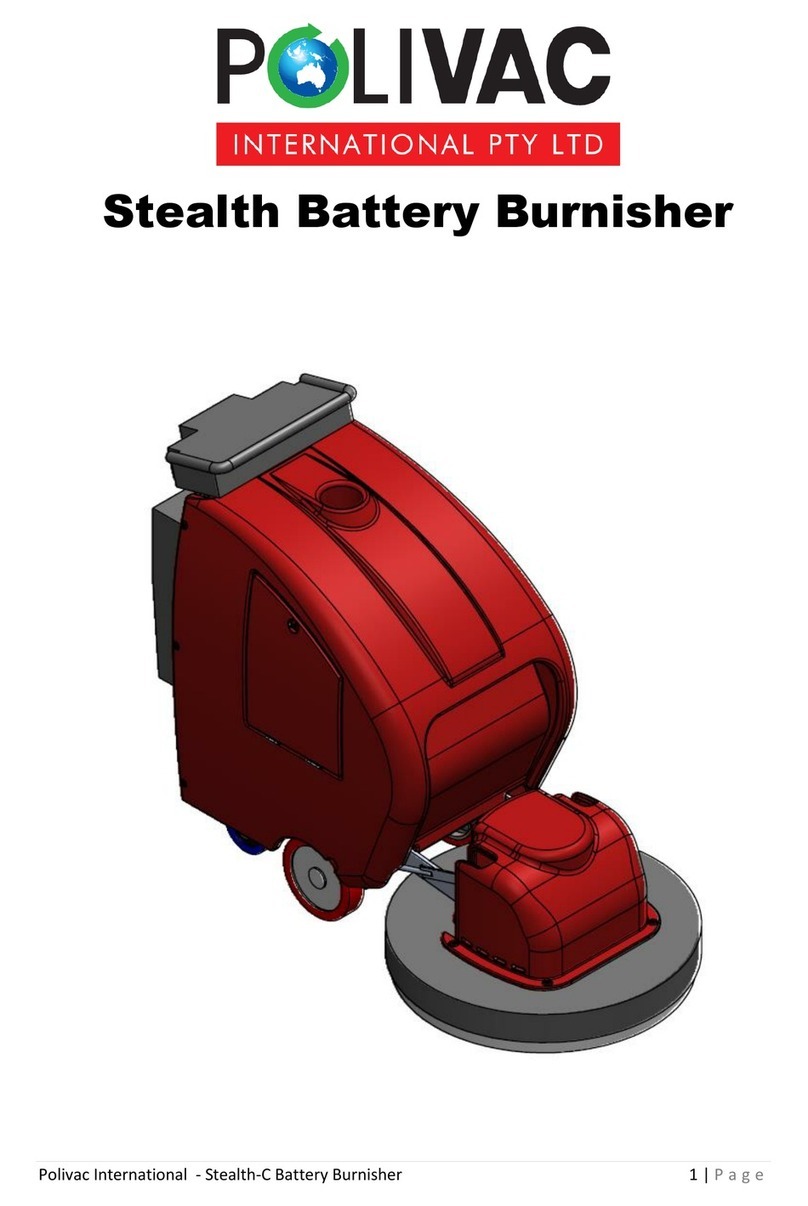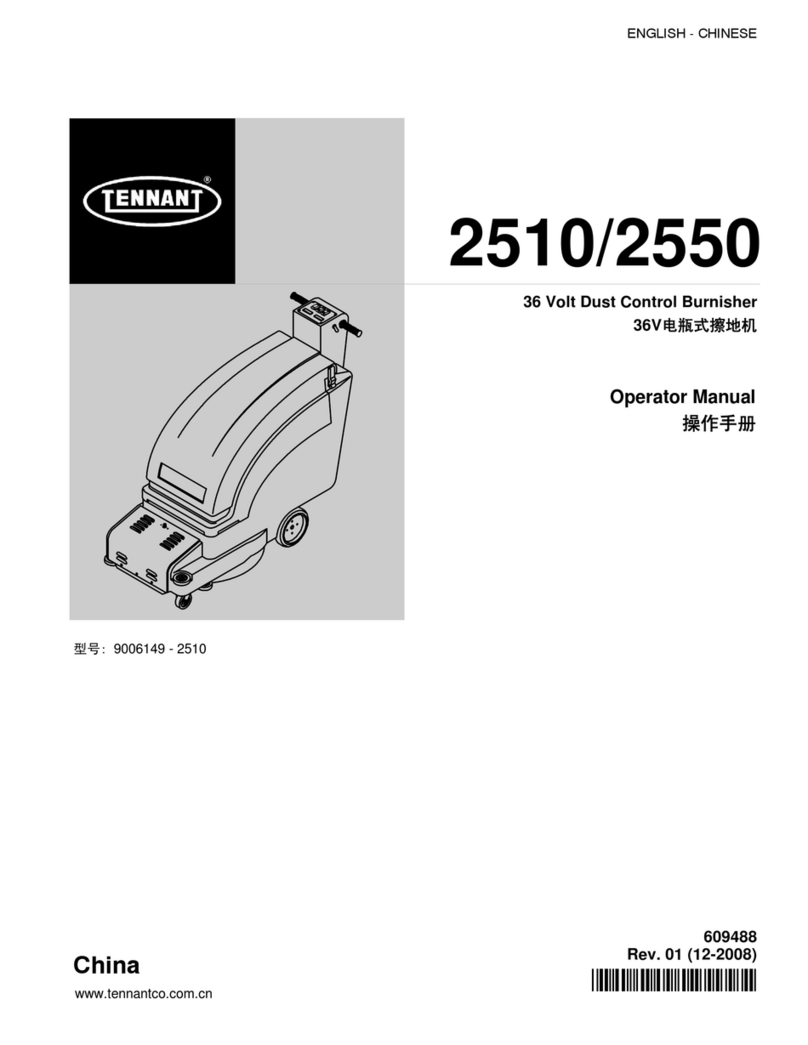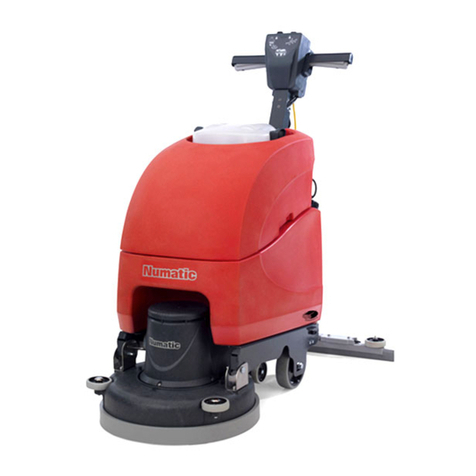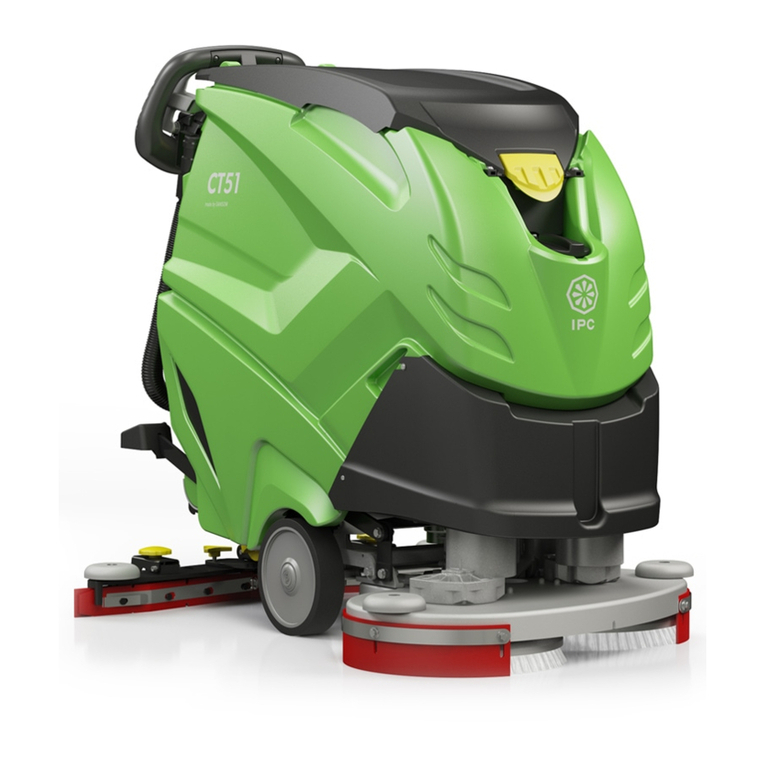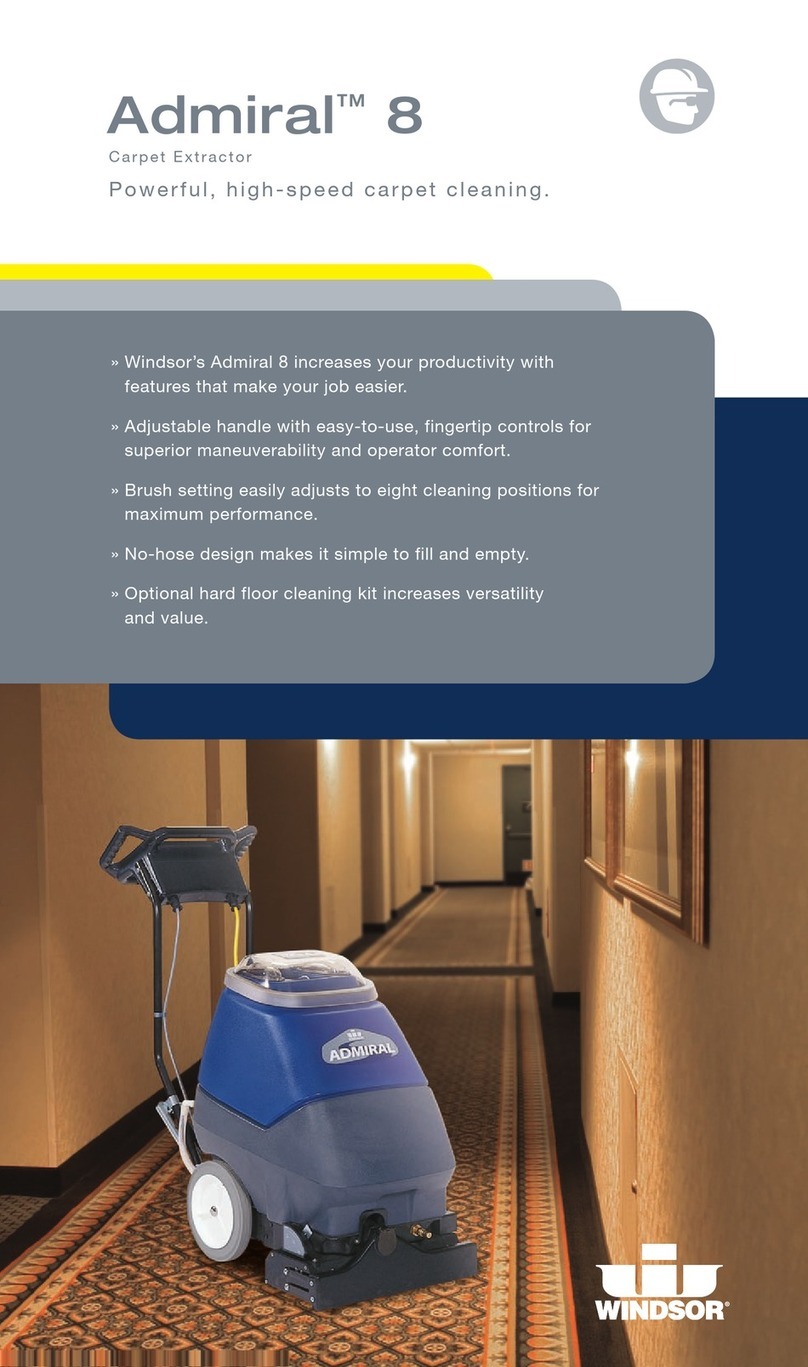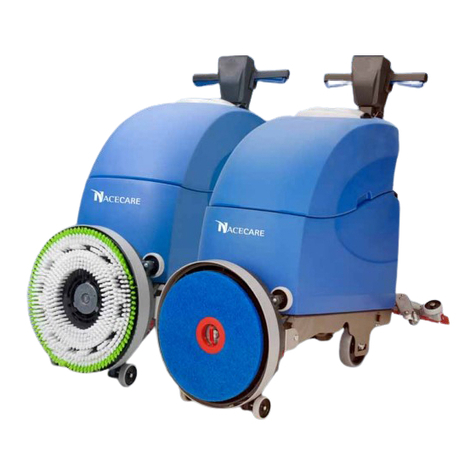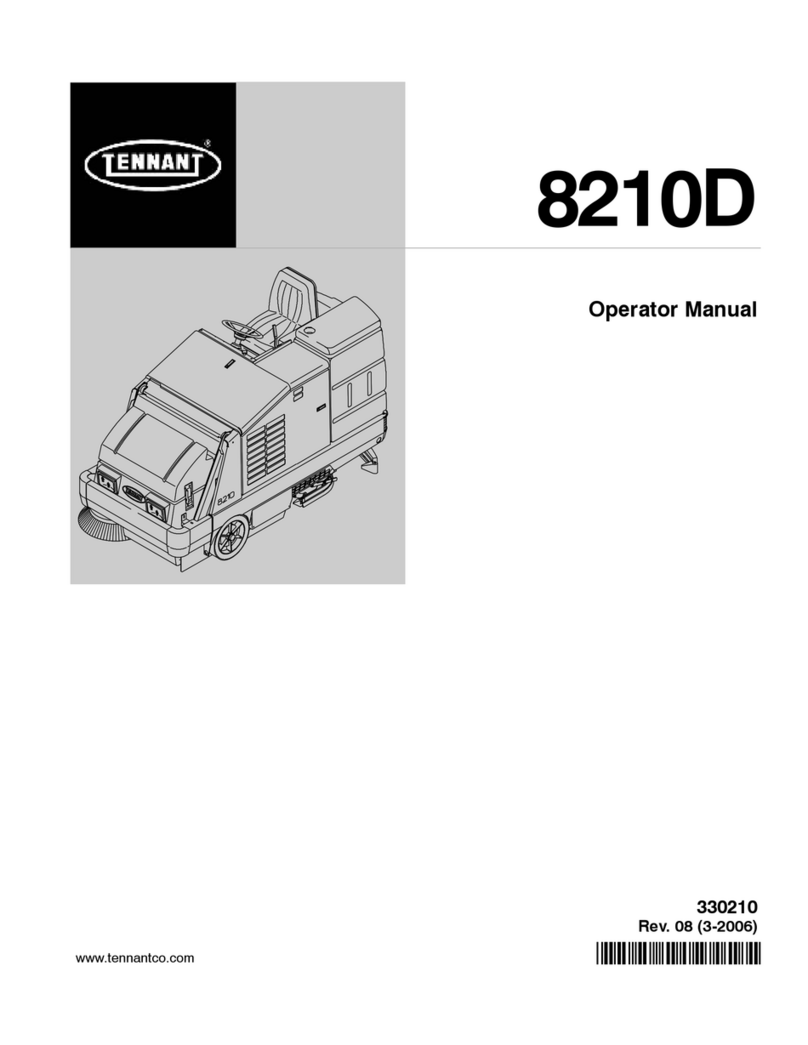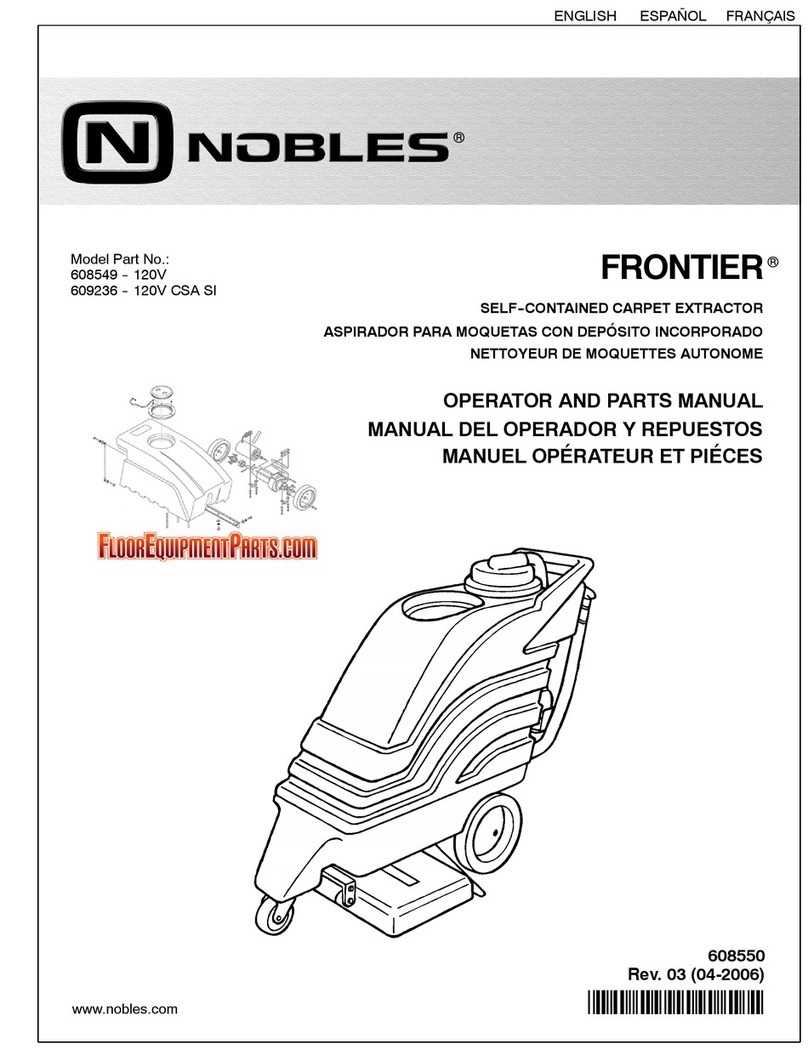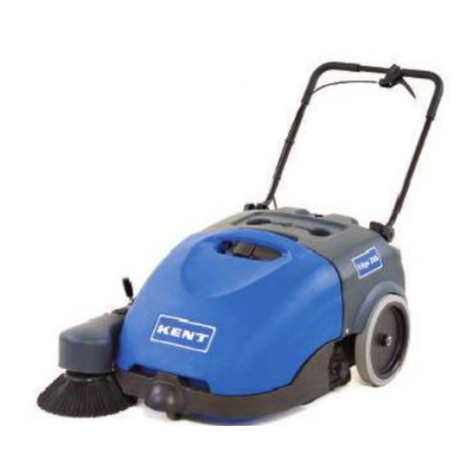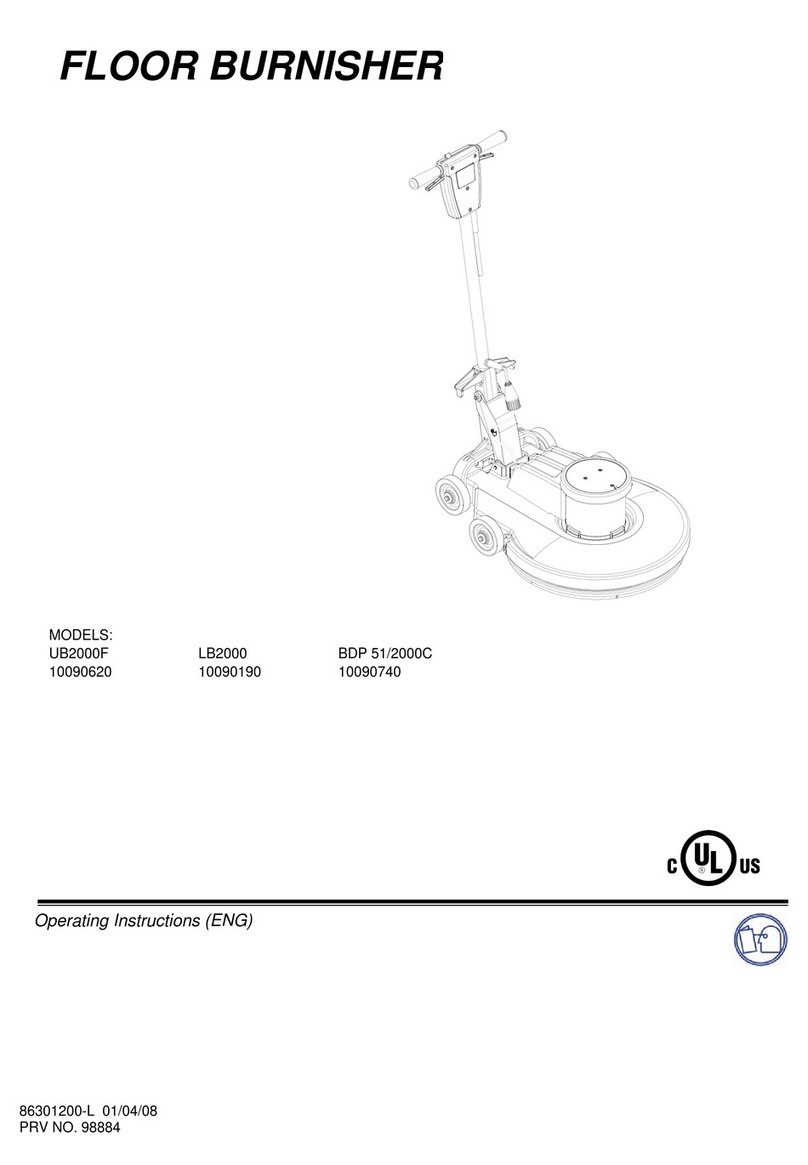3
INTRODUCTION
Congratulations on your purchase of a Polivac High Speed Gas Buffing Machine.
This machine has been designed to produce an optimum result with a minimum of effort and investment.
For you to receive the utmost from your investment and keep your machine serving you for many years to
come, you will need to establish a proper maintenance schedule.
Premature failure of the engine can be quite expensive and is the major reason for machine downtime.
It is essential that the items listed below are constantly addressed.
NB This manual should be read and implemented in conjunction
with the motor manufacturers manual.
1. OVERHEATING is the major cause of engine failure. Keep the cooling air debris filter clean.
Protect your machine and allow any foreign matter to build up on the cooling fins of the engine.
2. LOW AND DIRTY OIL is the next most common cause of the engine failure.
•Change the oil according to the motor manufacturers recommendations and check the
oil level and condition daily before each use.
3. YOUR GAS BUFFER MUST NEVER BE TILTED ON TO THE LEFT HAD SIDE (VIEWING
FROM BEHIND THE UNIT).
•This will cause oil to seep into the carburettor and head of the engine, which will cause
excessive smoking and damage to the engine and regulator system.
USE AND CARE
Before using any new equipment, Polivac strongly recommends following safety precautions for all owners
and operators of gas-powered equipment.
SAFETY PRECAUTIONS
1. Polivac recommends the wearing of protective ear-wear as continuous exposure to high noise
levels may cause damage.
2. Do not touch the hot muffler/exhaust.
3. Do not allow any person to come in to contact with the rotating pad and keep other people
away from machine whilst it is in operation.
4. Do not leave machine unattended whilst running.
5. Do not leave machine accessible to untrained persons.
6. Do not operate the machine if the pad is off centre, damaged or missing. Substantial damage
to the floor, the machine or injury to personnel may result.
7. Vibration from machinery may cause numbness or tingling of the fingers in certain people.
Smoking, dampness, diet and heredity may contribute to the symptoms. Wearing warm
clothing gloves, exercising and refraining from smoking can reduce the effects ofthe machine.
8. The machine should be checked for any loose or damaged parts.
9. If a headache develops whilst machine is in operation it should be stopped and checked for
carbon monoxide emissions by a qualified repair agent.
10. If the smell of gas is evident, stop using the machine and take it outdoors. Have the source of
the leak repaired before continuing operation.
11. Never vent gas inside a building.
12. If your machine develops a high-pitched whistle, stop the engine and check the oil level. (Note
newer model are fitted with an alarm or cut off switch)


